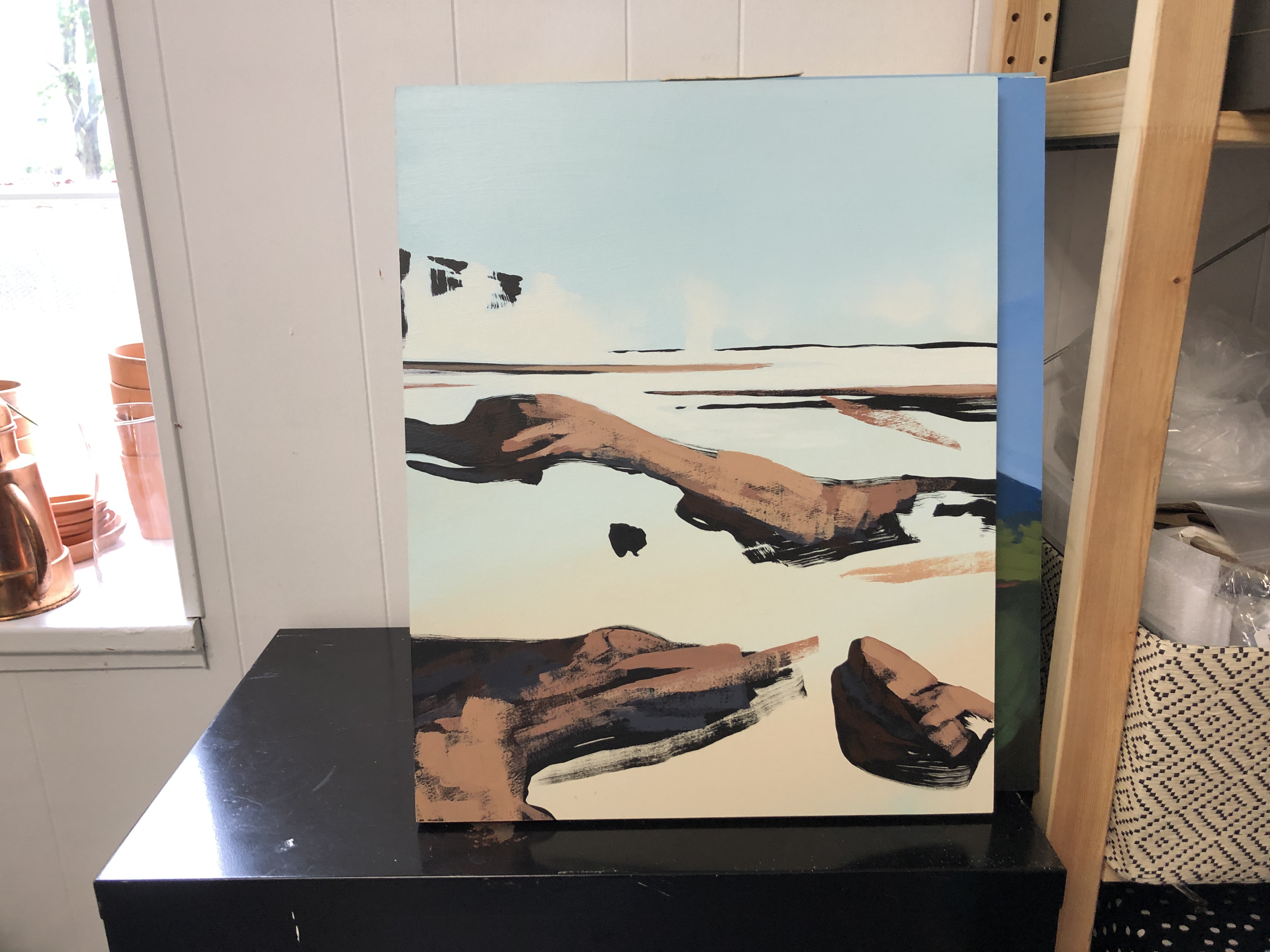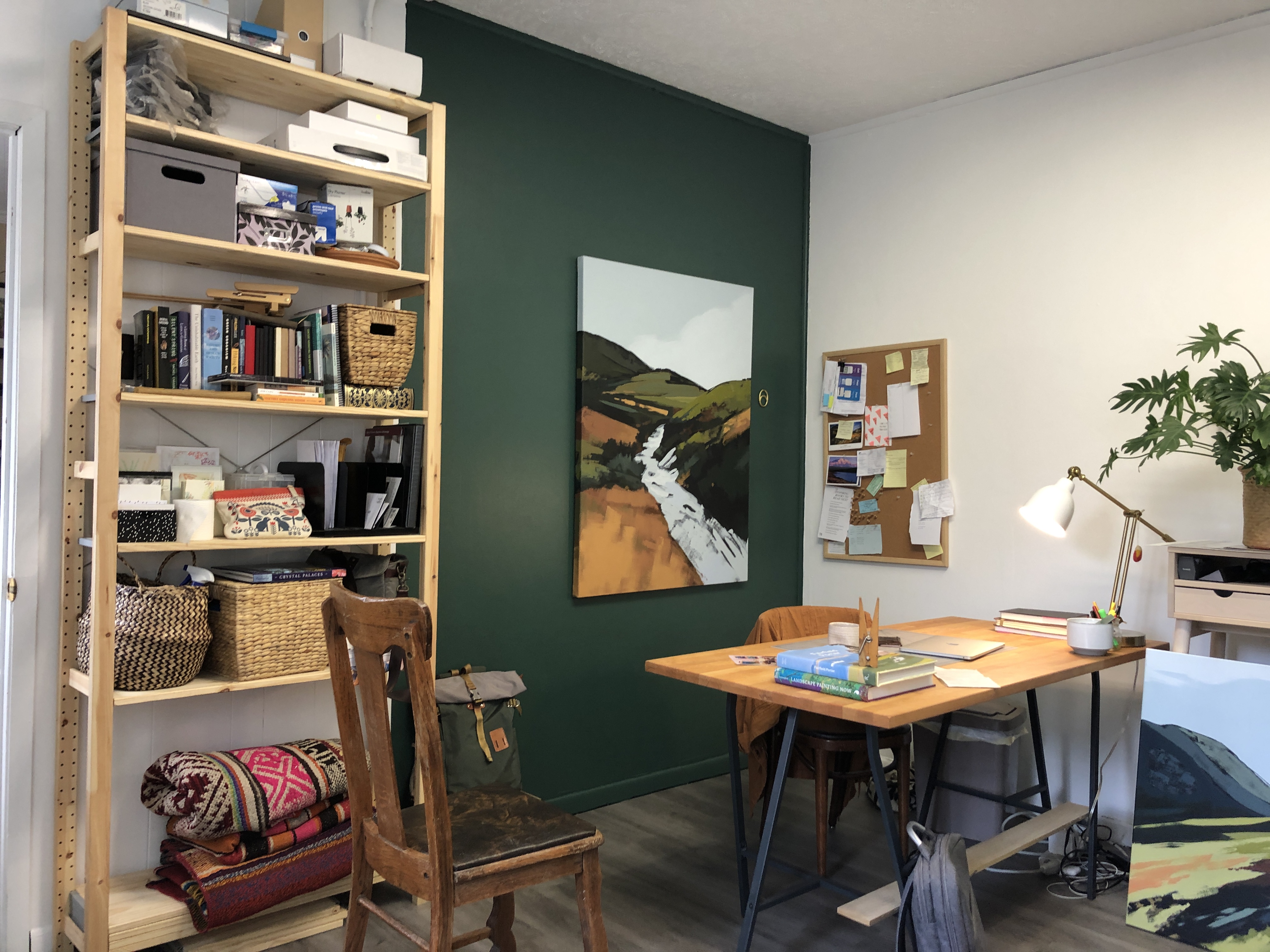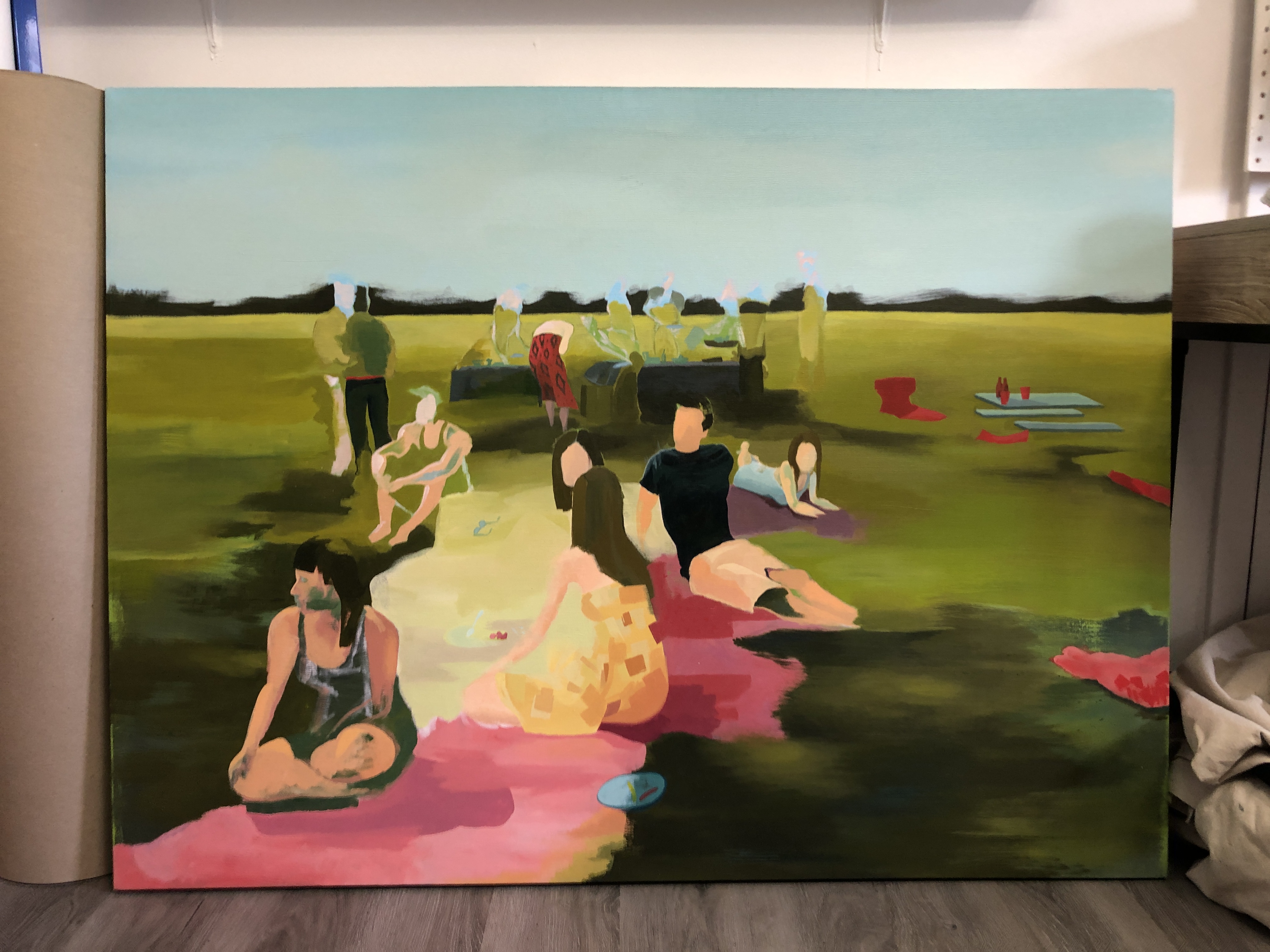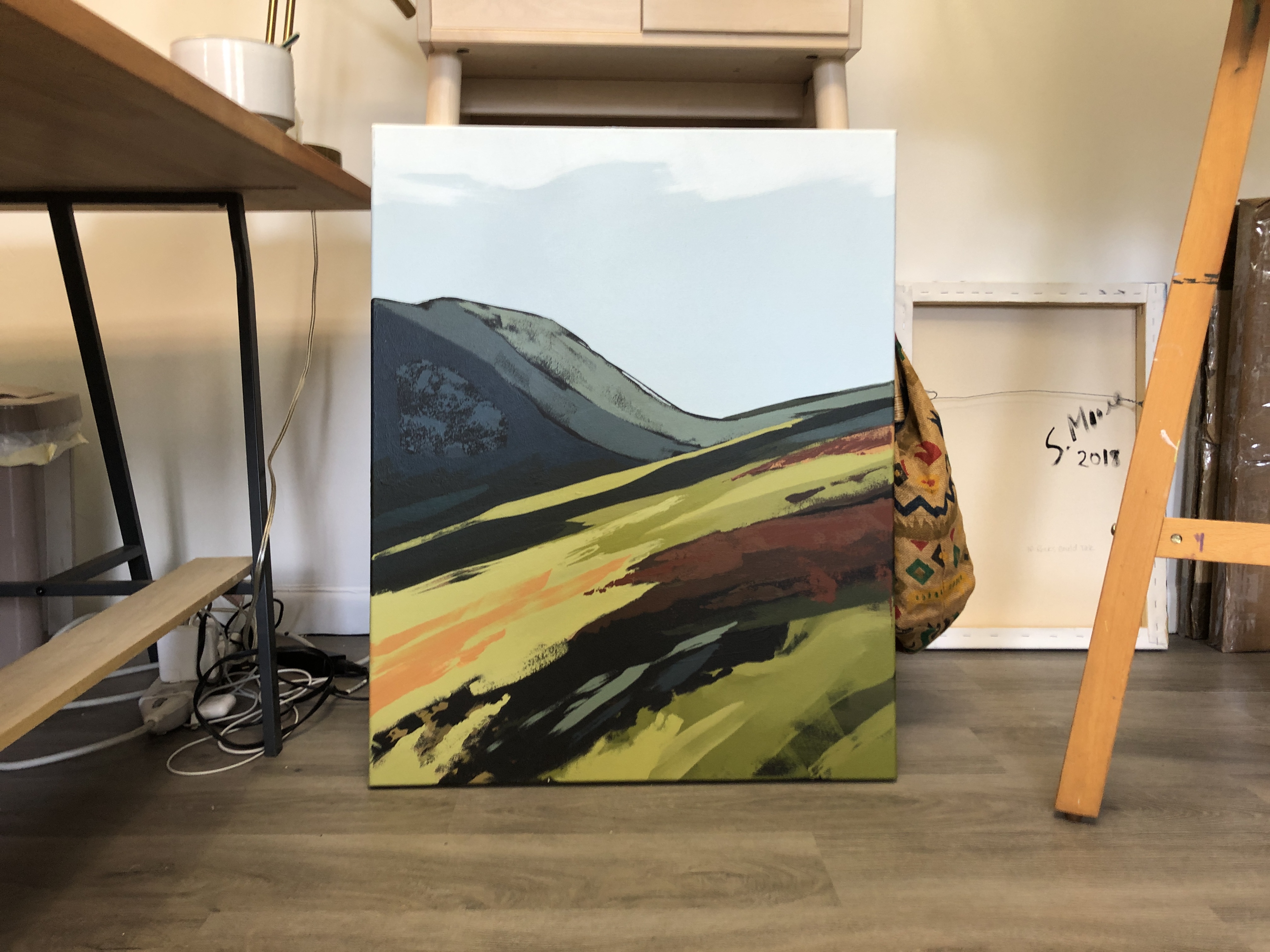This month I had the chance to sit down with Knoxville painter Sarah Moore for the first official Balltower Artist Feature Interview. She’s great.

Sarah is a fitting first feature/interview for me because she’s actually part of the reason I’m working on this blog.
I used to be really frustrated with Knoxville. Where I saw real potential for good work and a thriving art culture, I found my hope was betrayed. The city couldn’t muster enough curatorial courage to discriminate between vital, evocative art and $35 handmade necklaces. Going to galleries and little shows, I saw the chasm between consumer decor and outsider weirdness too large to have hope. But a few years ago, walking through a Dogwood Arts Festival in Market Square, I came across Sarah Moore’s work and my hope was renewed.
Here were paintings that sat comfortably within the consumer genres nearby at the festival (plants, landscapes, decor), but also just far enough outside of them to make me feel something. Sarah had left portions of her pieces unpainted, brush strokes shot across a seascape to represent rocks, bushes grown from the slice of a palette knife.

Sarah’s painting depicts a recognizable image under the duress of perception. Which means the image captures things difficult to capture with paint–things like time and memory and emotion. The paintings often look “in-progress,” as if the attempt to freeze a memory or vision in the mind was always half-complete (as memories always are) or the true sense of a place was always evading understanding (as places always are, and especially the grand landscapes that make up most of Moore’s stuff).
Her work left an impression on me after that first encounter and I started poking around Knoxville for more art. I started a habit of gallery visits and Instagram rabbit trails. And eventually, I started Balltower.

So it was cool to meet up and chat about Knoxville, planting trees, and how she landed on her blend of abstraction and realism.
BT (Balltower): How did you start painting?
SM: I had always painted and done creative things, and I went to school for architecture, where of course I was drawing and sculpting. But I was making stuff all the time. I had an understanding of the technical stuff before college–color-theory, foreshortening, perspective.
BT: What made you switch to just painting? Did you pursue architecture?
SM: By my last year of architecture school, I was at a very low place. I was burned out. I took some time off to find myself and knew pretty quickly that architecture wasn’t right for me. So I was in this low place and I drove out to a craft store and bought some tubes of paint and a canvas and I painted that [she points to the wall behind me at the painting shown below].

BT: That looks similar to your recent work. What about that first painting felt right?
SM: Part of it was the actual scene itself. I was in school in St. Louis, and May in St. Louis is paradise. That day was pure joy. Most of the people in the picture had just graduated so we had this huge celebration picnic. It felt like garden-of-eden-level perfect. I took a picture of it that I loved, but I never printed it because there were elements that I didn’t like. There was trash on the ground. Stuff like that. So I took the photo into photoshop and took that stuff out. But then I kept going. At first I removed a cup here or there and then a chair and then I eventually took a whole tree out.
BT: It became more abstract.
SM: Yeah, I kept taking stuff out until I felt like there was a moment of breathing. And since I’d been so covered up with school, it had been maybe five years since I’d done much painting and I had to figure out how to paint again. I just needed to get into it, but that was my most important breakthrough–I started drawing with the paint itself–
BT: Instead of plotting it out beforehand with pencil–
SM: Yeah, and so I made a lot of perspective mistakes. It’s not really an accurate picture any more. There were a lot of things that were honestly just mistakes. But I liked how it looked.
BT: What about those particular mistakes felt exciting to you?
SM: So, the perspective should actually be more collapsed based off of where I was standing. All of the faces should be closer. But I spaced everything out and everything felt like it was floating. And the way that I was blending the grass–there was just this weird sense of ephemerality and movement. There were certain details that I got stuck on for some reason and other places where there was no detail. It felt like memory feels. Weightless and moving.
BT: What about your colors? Your colors aren’t sourced from a typical landscape palette. They are what I would call impossible or post-digital colors. Especially the blues you use for skies. Did you just mix a blue until you found one you liked?

SM: Mhmm. I’ve been lucky to travel some and see places relatively unspoiled with the human footprint. I had been to Ireland, and there was this day on the Aran Islands where I was looking out to the horizon and the sky was teal. It wasn’t blue. The air was so clean that the sky was teal. After that I would look at the sky and think, “Wow. That sky is really dull compared to what I know it could be.” So I think, in a way, there’s a sort of denial of the world I’m actually in and I’m chasing a cleaner, more pure version.
BT: It sounds like many of your choices are motivated by idealism.
SM: Yeah.
BT: How do you think idealism can function productively? A lot of art feels tasked with being challenging or gritty. Is it not more important to make what some people would call “honest” pieces that expose truth?
SM: There’s the selfish sense that I just find it more enjoyable. There are all kinds of things happening simultaneously: there are gorgeous, free sunsets every day and then there are mass shootings. That’s just the tumble of life. And I’m an optimist. You can train your focus on anything. My mental state actually tends toward depressive things like climate change. Culture trains us to dwell on violence and outrage.
BT: So, we’ve got this idealism and something else that keeps coming up: fleeting time. What relationship do you see between those two? Momentary glimpses and optimism.
SM: I think they’re tied to progress and urgency. Like youth that are going on strike for climate change–they’re fighting for something transient, they’re saying, “What’s the point of going to school if this stuff isn’t going to be here for much longer,” but also any strike like that is motivated by idealism. I’m energized by being back in the places I paint. Natural spaces. And when I think about the few places I’ve been that are relatively untouched, I want to make people aware of how beautiful they are. There’s a sense of urgency.

BT: Concerning climate change: do you hope that your work would encourage political or conservationist action?
SM: I think some people are really good at leading movements and galvanizing action. I don’t think I’m good at that. What I might be good at is creating a space where people can breathe and ask a question. So I would rather my work be something that makes people mindful of beauty in a new way. That they maybe just see a little bit more of it. And I think, over time, people who see something value it more than they would otherwise.

